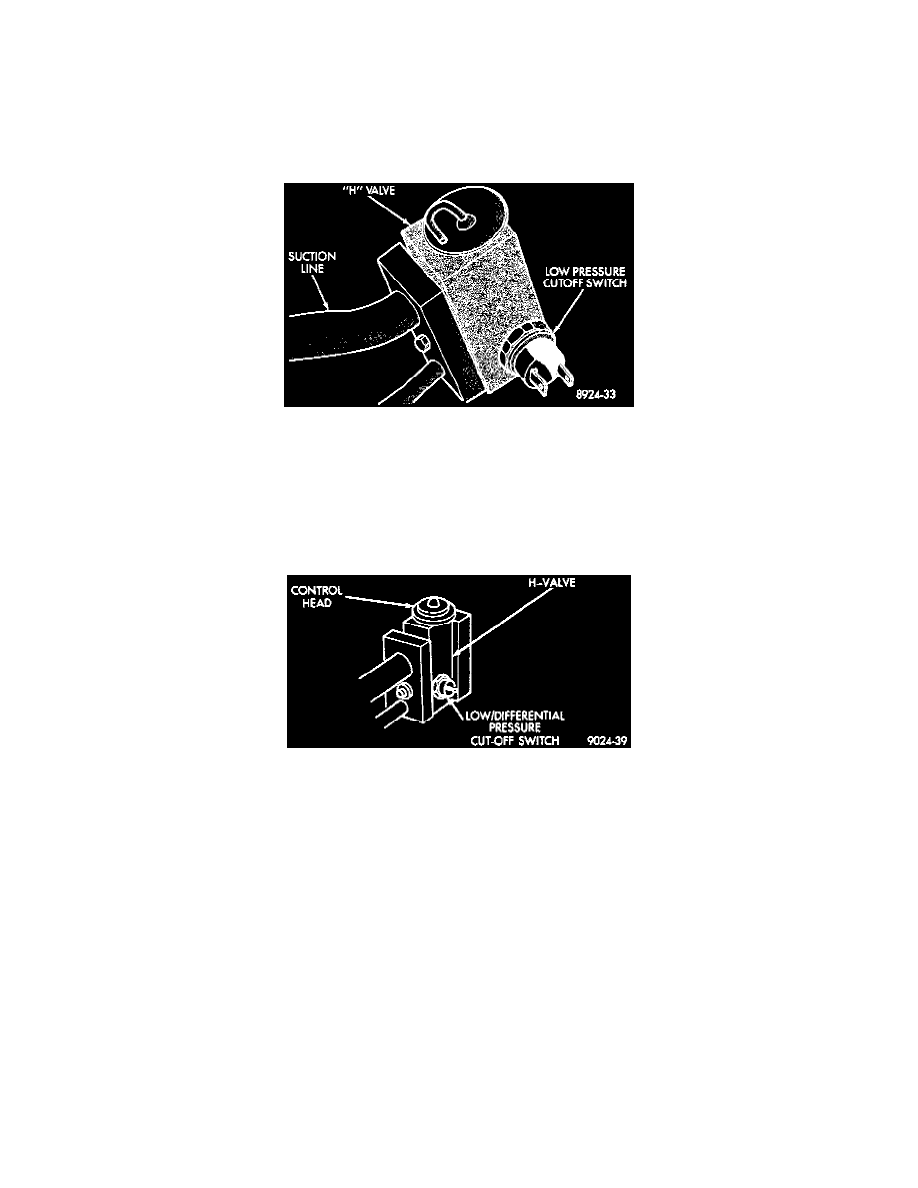Dynasty L4-153 2.5L SOHC VIN K TBI (1992)

H-Valve: Testing and Inspection
W/ Fixed Displacement Compressor
SILVER COLORED EXPANSION VALVE
NOTE: Expansion valve tests should be performed after compressor test.
CAUTION: Review SAFETY PRECAUTIONS AND WARNINGS.
Low Pressure Cut-Off Switch
The work area and vehicle temperature must be 21°C to 27°C (70°F to 85°F) when testing expansion valve. To test the expansion valve:
1. Connect a charging station or manifold gauge set to the refrigerant system service ports. Verify the refrigerant charge level using the sight glass
method.
2. Non-ATO System: Remove the right side kick panel trim cover. Locate and disconnect two vacuum lines from the recirculating air door actuator.
The connections of these two lines must be switched. Connect the dark green line where the light green line had been and the light green line
where the dark green line had been. It may be necessary to use a six inch length of small vacuum tubing to connect the dark green line.
Expansion Valve
3. Disconnect fin-sensing cycling clutch switch. Jump terminal pin #1 to pin #3 in the wire harness connector.
4. Disconnect wire connector at low pressure cutoff switch. Using a jumper wire, jump terminals inside wire connector boot.
5. Close all doors,windows and vents to the passenger compartment.
6a. With ATC: Set automatic temperature control to A/C, 27°C (85°F), FLOOR, and high blower.
6b. Without ATC: Set heater-A/C control to A/C, full heat, FLOOR, and high blower.
7. Start the engine and hold the idle speed at 1000 rpm. After the engine has reached running temperature, allow the passenger compartment to heat
up to create the need for maximum refrigerant flow into the evaporator.
8. Discharge (high pressure) gauge should read 965 to 1655 kPa (140 to 240 psi) and suction (low pressure) gauge should read 140 kPa to 207 kPa
(20 psi to 30 psi), if the refrigerant charge is sufficient. If system cannot achieve proper pressure readings, replace the expansion valve. If pressure
is correct, proceed with test.
WARNING: PROTECT SKIN AND EYES FROM CONTACTING CO2 PERSONAL INJURY CAN RESULT.
9. If suction side low pressure is within specified range, freeze the expansion valve control head for 30 seconds. Use a super cold substance (liquid
CO2). Do not spray R-12 Refrigerant on the expansion valve for this test. Suction side low pressure should drop to -50 kPa (-15 in. Hg) If not,
replace expansion valve.
10. Allow expansion valve to thaw. The low pressure gauge reading should stabilize at 140 kPa to 240 kPa (20 psi to 30 psi). If not, replace
expansion valve.
When expansion valve test is complete, reverse steps 4, 3, and 2. Test A/C overall performance. Remove all test equipment before returning
